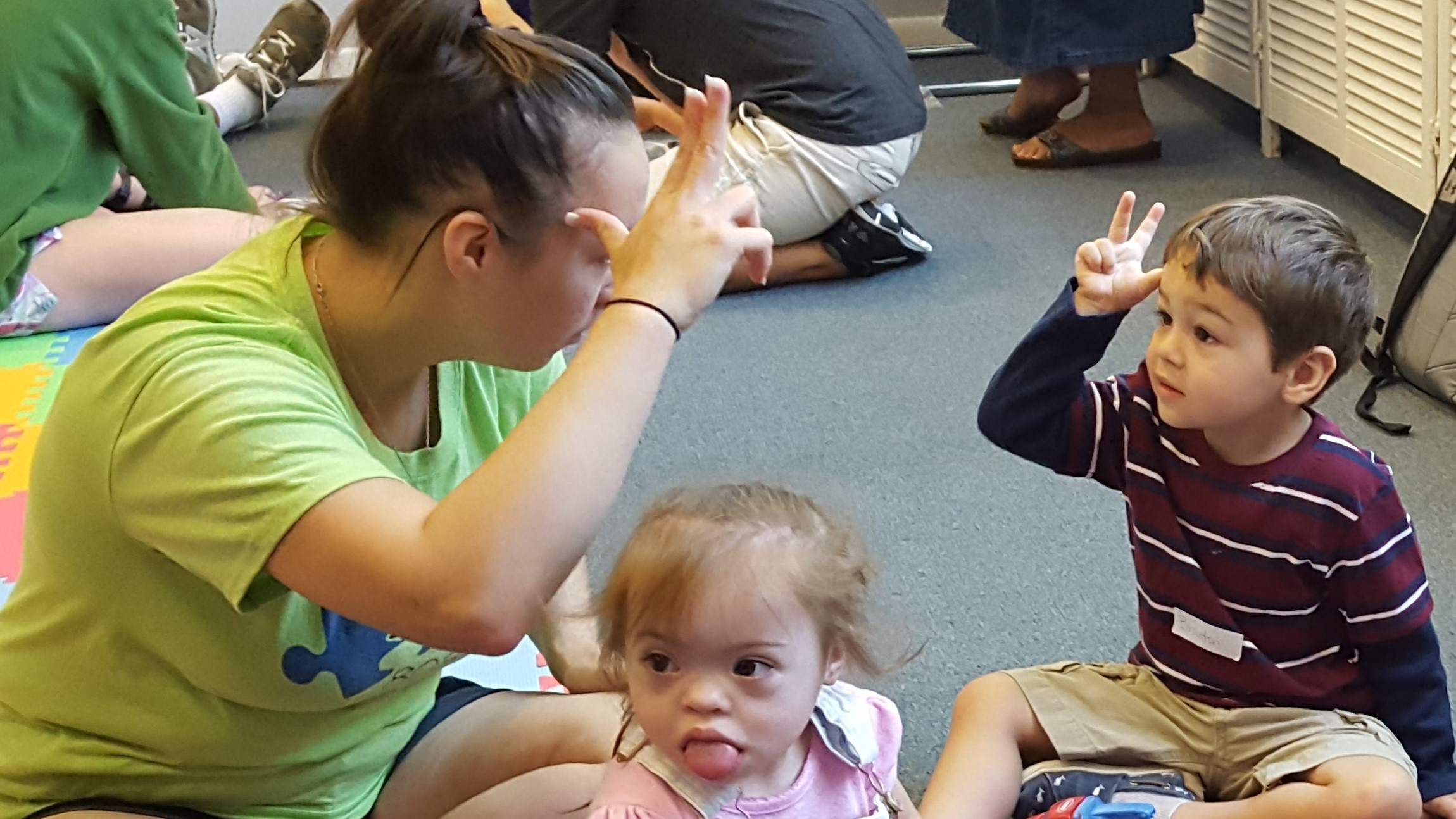Jill G. Eversmann, MS, CCC-SLP
Speech-Language Pathologist
Signing Time Academy Instructor
When working with toddlers and young children who are pre-verbal, minimally verbal, nonverbal, or whose speech is not intelligible, signs are often introduced to encourage speech and language skills and foster communication. One of the keys for success when using signs with children with special needs (if you are the professional introducing signs to children), is to make sure that the parents and caregivers learn the signs as well.

- Use Signs that are Part of a True Language – American Sign Language (ASL) Signs
While using single signs is not the same as teaching the language, with ASL’s unique rules and structure, it does provide a base of vocabulary that is part of a true language. Anyone who knows ASL would be able to understand what the child is signing.
Do not invent or “make-up” signs. While this might seem harmless and the goal is noble, to help the child communicate; teaching a child invented signs gives them a way to communicate with a very limited number of people. When the child is taught ASL signs, he/she will be able to communicate with teachers, therapists, other children and members of the community who know ASL.
*One of the many things I love about the Signing Time and Baby Signing Time programs is that they incorporate true ASL signs. The Baby Signing Time & Signing Time videos are a great way to learn units of signs and the Signing Time Dictionary is a great resource for learning single signs: www.signingtime.com/dictionary
- Use Signs that are Motivating to the Child
Many of the early goals in speech therapy include helping the child communicate her wants and needs. Teach signs that would include what the child would normally be requesting or inquiring about (signs for food and drink, Mom & Dad, play, book, car, ball, baby, shoes, outside, swing, etc). Also teach the child to use signs to protest (all done, stop, no). Using signs to protest is much more socially acceptable than using negative behavior.
- “Show It + Sign It + Say It”
Show the object, picture or symbol representing the word, say the word and produce the sign.
We want to do all 3 to ensure that:
- The child connects the known information with the new information.
- As a language learner, the child might not be thinking of the right word when hearing it. The object, picture or symbol helps ensure that they connect the word to what it means and the sign teaches them a way to be able to use the word.
- Saying the word encourages speech. When using key signs for communication, we want to vocalize with the sign and encourage the child to vocalize, at whatever level they are able.
For many children with speech and language delays and disorders, we are using signs as a “bridge to speech.”
- Use Signs Regularly Throughout the Week and REPEAT, REPEAT, REPEAT
Parents can continue to say what they would normally say, but sign those key words. When teaching the sign for milk, parents might say: “Do you want some MILK?” (saying all of the words but signing only MILK). Then add: “Here is your MILK,” “You finished all of your MILK.” Repetition is an important part of learning.
We also want children to see that this is a real means of communication. Let the child see other family members signing to each other.
- Accept the Child’s Version of the Sign but Continue to Model the Target Version
We do this naturally with speech. We might ask a child if he wants a “cracker” but understand and accept the child’s version- “caca.” The adult responds not with “ok, here’s a ‘caca,’” but with “ok, here’s a cracker.”
With signs, I have seen or heard of many parents and some therapists adopting the child’s immature version of a sign and start using it as if it were the target sign. When that happens, the child assumes that is the correct “adult model” of the sign and continues to use that version. If he doesn’t see anyone using the target sign, how can he be expected to learn to produce it?
What we know:
-Signing Supports Speech and Language Development
-Children are able to Sign before they are able to Speak
-Signing can reduce frustration and decrease the frequency of tantrums – that are related to not being able to communicate
Figure 1 Parent Signing w/ children during Koala Camp, Columbia College, SC.
*I learned signs in college and have used them in therapy for years but am forever grateful to the family who introduced me to Signing Time and Baby Signing Time. I fell in love with the program and saw how Rachel, Leah, and Alex made learning to sign fun and easy. Currently, in my roles as a clinical instructor and as a professional development speaker, I use videos from the programs with children, college students, families and professionals. They all love it and ask for more!
Jill is a pediatric speech-language pathologist with over 30 years of experience, a clinical instructor at Columbia College, SC, a national speaker with Motivations, Inc. and a sign language instructor. She owns SPEECH SIGNS, LLC, in Columbia, SC. *Professional development seminars: (motivationsceu.com. Seminar #’s 337, 7337). Her seminar topics include using sign language with young children and effective behavior techniques in early intervention.
To contact Jill: email: jill@speechsigns.com, LinkedIn, SPEECH SIGNS FB page
#signlanguage #ASL #early intervention #speechtherapy #specialneeds #SigningTime #BabySigningTime #TwoLittleHands

